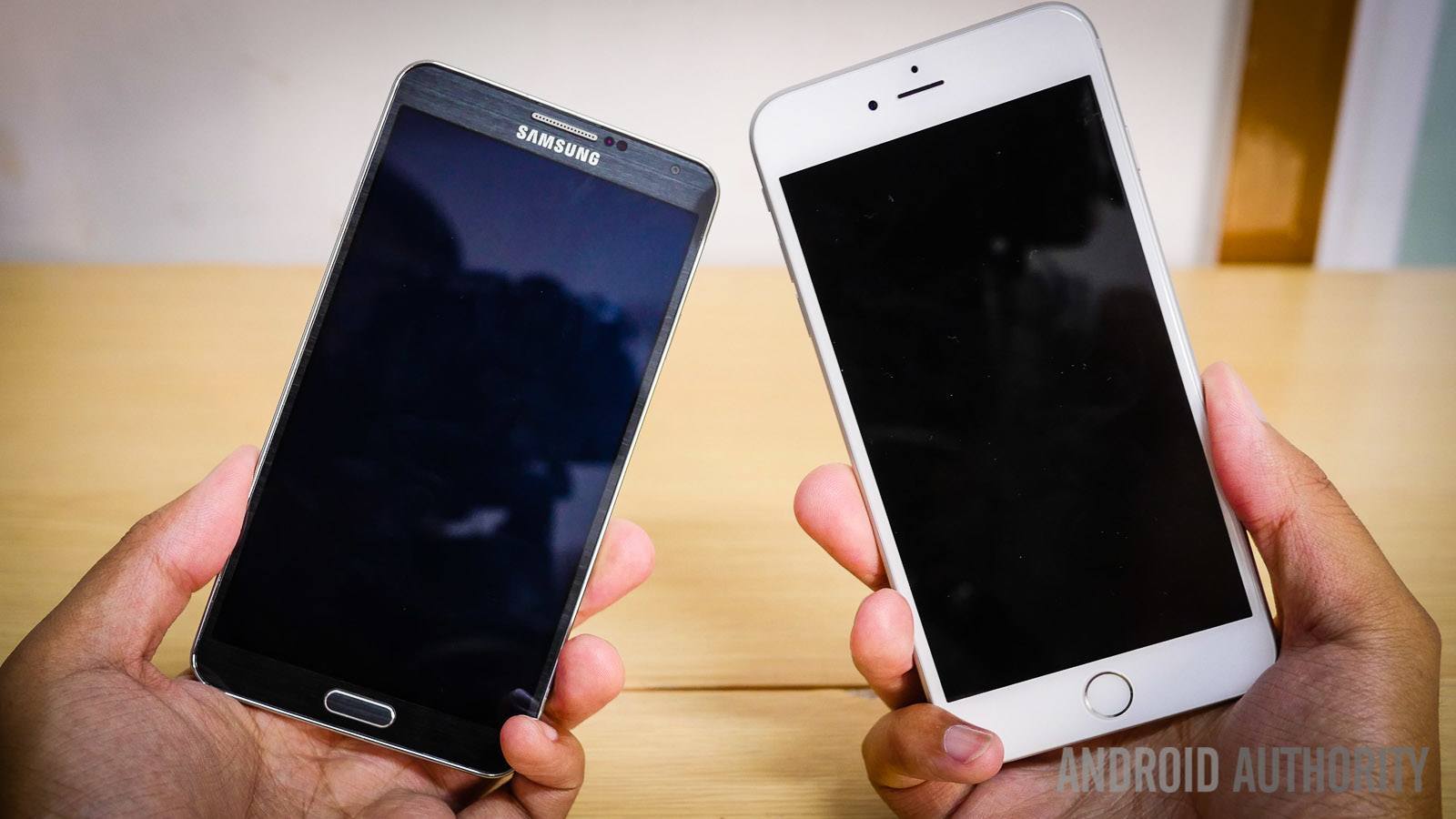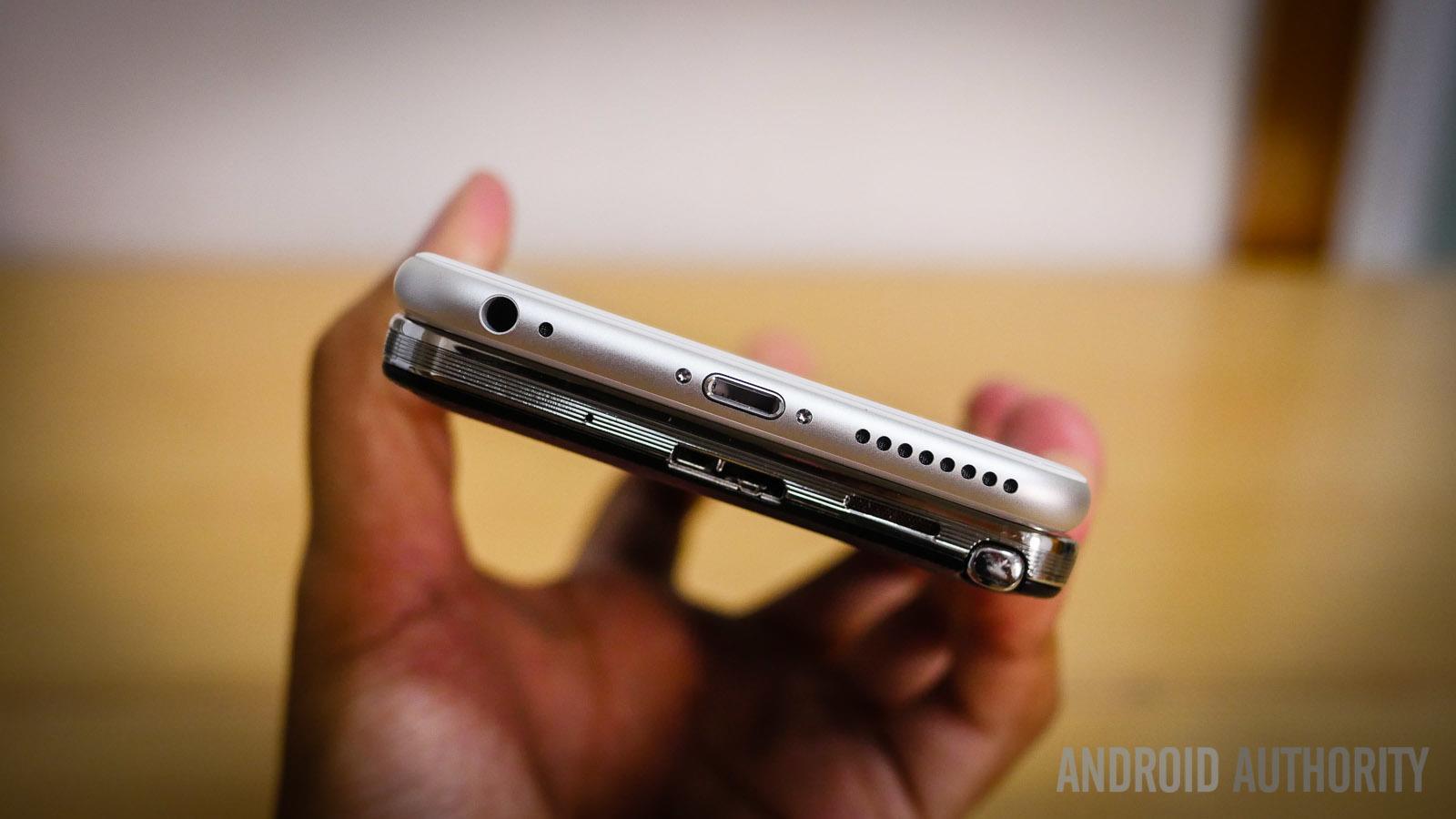Affiliate links on Android Authority may earn us a commission. Learn more.
iPhone 6 Plus dominated US phablet market in October, says Kantar
December 5, 2014

Samsung recently ran a PR campaign to remind people it created the phablet genre (well, give or take a Streak or two). The Galaxy Note was largely ridiculed when it came out for being way too big and tablet-like. Steve Jobs was so disgusted in particular, that he tried to make it the punch line of many snide remarks. In a truly ironic fashion, Apple has now discovered that the device it knew customers didn’t want is actually just the opposite. According to research firm Kantar:
[quote qtext=”On the market for just over a month of the three months ending with October 2014, the iPhone 6 Plus captured 41% of “phablet” sales—sales of smartphones with a screen size of 5.5 inches and larger. Phablet sales represented 10% of overall smartphone sales, up from 2% for the same period in 2013.” qperson=”Carolina Milanesi” qsource=”Kantar” qposition=”center”]
Objectively speaking, this is an impressive performance. Apple managed to convince countless Americans that big phones are great, something Samsung and other OEMs have been working on for years.
But this achievement is also a bit sad. For a company that spent years churning out phones with a scant 4 inches of screen (or less), the success can only be seen as complete legitimization of everything Samsung has done with the Note. Besides that, while Apple never hesitates to tell the world all the magic it has invented, the iPhone 6 Plus can be seen as a weaker product, for it offers no real multi-tasking, no stylus input, and save for a keyboard change, Reachability, and landscape home rotation, any kind of in-house software that was created specifically for the additional productivity. And then there’s Bendgate, Bendgazi; call it what you want, but the iPhone 6 seems to be more envious of the LG G Flex than anyone first thought. While the device has good battery life for its thickness (something Apple had long maintained was a key factor in deciding if it should release a phablet), the fact that it is far too pliable in the pocket smacks of bad design.
There are two key points that should be raised here as well, in seeking to evaluate the device’s success:
1. These sales figures come from the USA. As companies like Xiaomi and HUAWEI have proven, the American market isn’t the be-all, end-all by far. Likewise, Americans seem to be the most gaga over anything Apple, whereas other countries have seen a decrease in Apple related sales.
2. Apple had forced users to accept a small screen since the inception of the iPhone, and thus there was/is considerable demand for a product that has never been offered before. Likewise, the sales figures offered by this report are taken from October. Obviously a product is going to be selling a ton of units when it first releases provided it has a fair shot at success. It would have been far more telling had the data consisted of the three months following the release of the 6 Plus so that one might see if the sales drop off. The other devices included in the report had been released earlier and thus sales would have dropped significantly.

Still, given that the USA has accepted the iPhone 6 Plus, there are two possibilities of what might happen going forward:
Now that Apple users finally have a big screen phone, and it’s little more than a mini iPad Mini, there will come an expectation for the software to catch up to the form factor. Samsung offers an incredible amount of bundled content that make use of the S Pen, and even some that don’t require it such as the split screen mode. This is actually a great opportunity for Android OEMs to highlight how much more competent their large devices are due to more careful thought put into their development.
The success may also inspire other manufacturers to double down on the development of smartphones in the 5.5-6.X range. Likewise, it would follow that as the iPhone 6 Plus is disseminated among larger swathes of people, seeing a phablet may gain larger mainstream appeal and acceptance, thus inspiring more self-conscious customers to take the plunge.
What do you think of the iPhone 6 Plus’s initial sales performance?